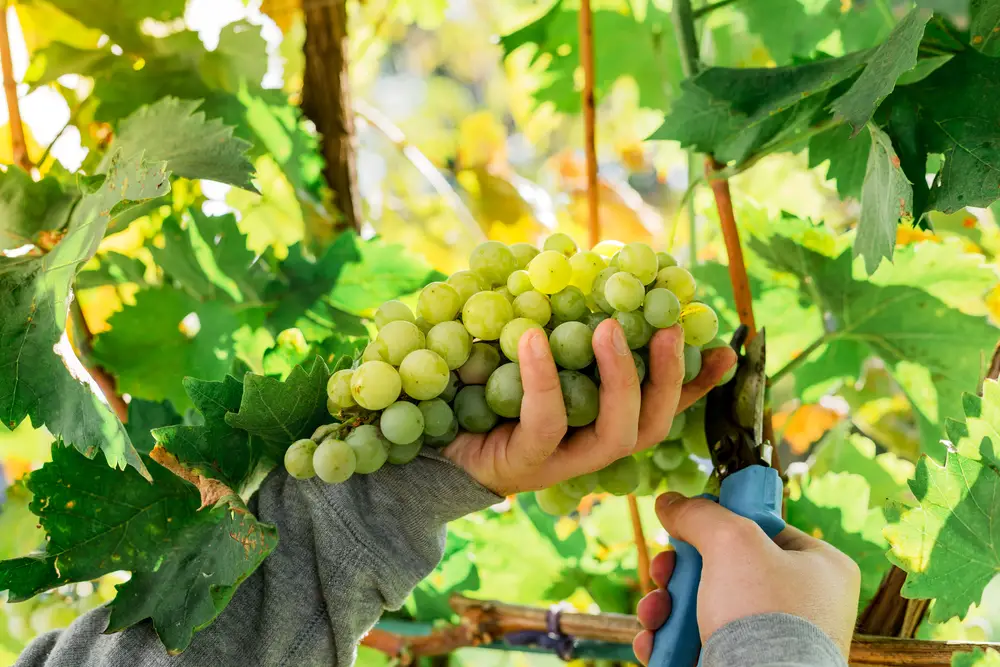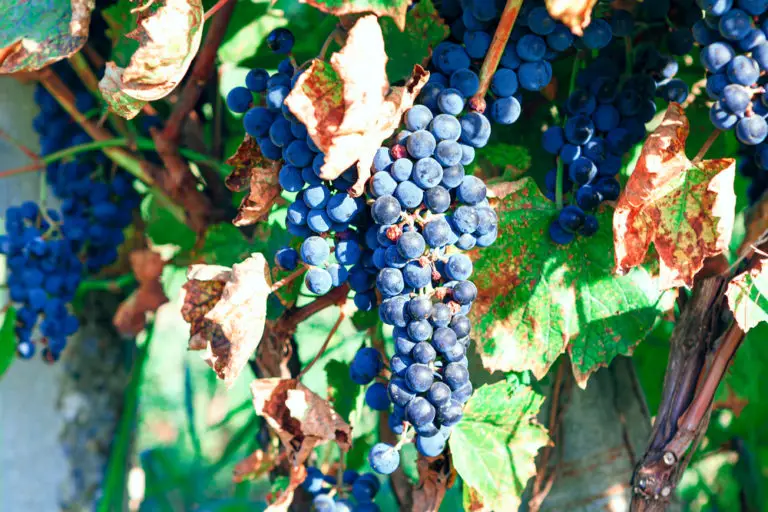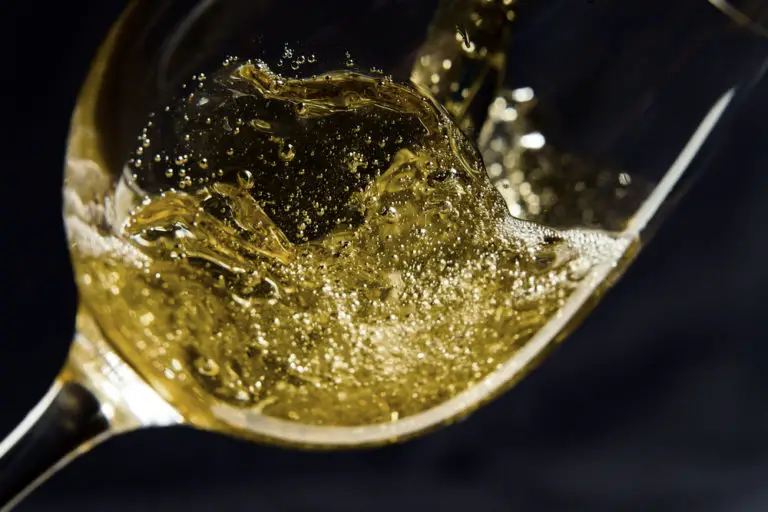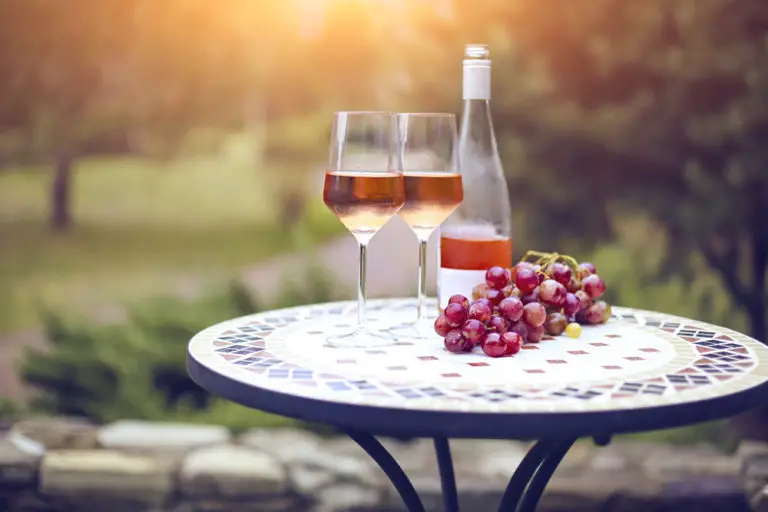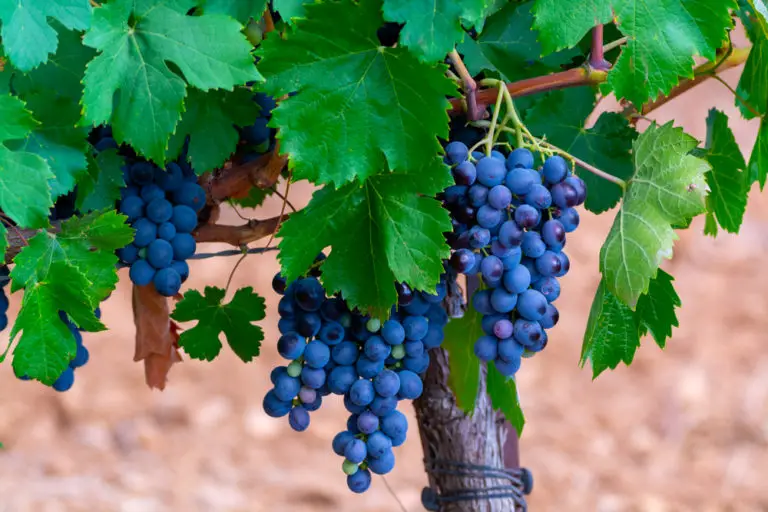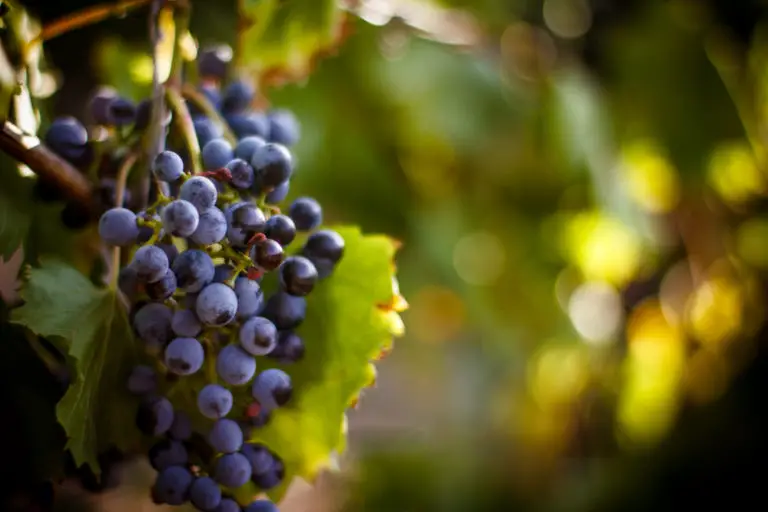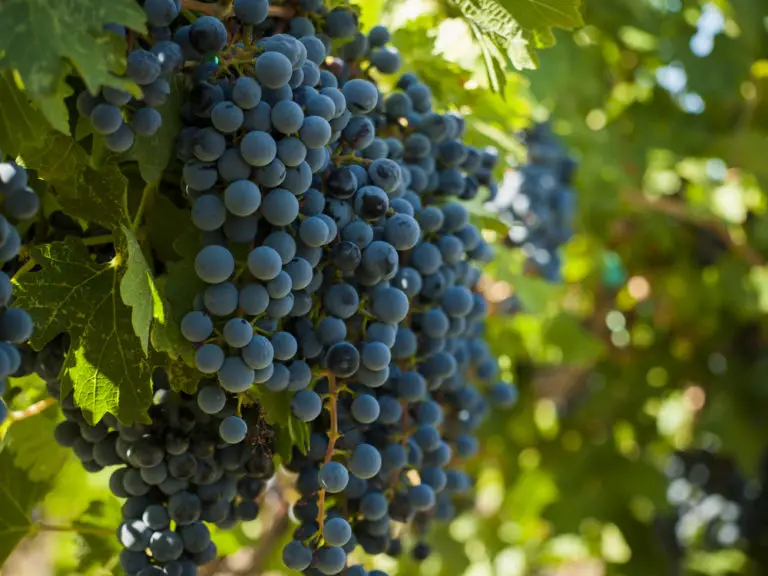Chenin Blanc: The Beginners Guide (2024)
Chenin Blanc is a wine with a lot of potential. This variety originally comes from Anjou and Touraine on the French Loire and is dry, residual sweet, or foamy.
This early ripening, white grape variety brings relatively high and stable yields even in hot climates.
Good vintners use it to make powerful and long-lasting white wines with distinctive acidity, fruit, and creamy texture.
Wine Color: Clear yellow up to a golden shimmer
Characteristics: medium-light body, low tannin, high acidity
Color of berry skin: White
Flavor: Dry
ABV: 12–14.5%
Origin: Loire Valley, France
Notable Regions: Australia, North America, Chile & Brazil, South Africa, New Zealand
Most Expensive Bottle: 1959 Domaine Huet Vouvray ‘Clos du Bourg’ Moelleux Wine Style Dessert – Lush and Balanced Grape/Blend Chenin Blanc
Common synonyms: Agudelo, Agudillo, Anjou, Blanc d’Aunis, Blanc d’Anjou
- What is Chenin Blanc?
- Known Regions for Chenin Blanc
- Popular Blends of Chenin Blanc
- How to Enjoy Chenin Blanc?
- How is Chenin Blanc Made?
- History of Chenin Blanc
- Alternatives for Chenin Blanc
What is Chenin Blanc?
Chenin Blanc is the grape variety of the central Loire Valley, where it produces the highest and long-lasting qualities in all forms of sparkling wine to sweet wine. But she also makes many friends from South Africa.
It is known for qualitatively excellent and aromatic characteristics, which are characterized by its beautiful fragrance. It has an abundance of fruity, floral, and honey-like notes and its lively interplay of fruit and acid.
Due to the susceptibility of the vine to noble rot, there is also a selection of fruit-sweet wines based on the white wine variety. Chenin Blanc’s pronunciation is shen-in-blahnk.
Older vines are used on a suitable terroir to produce clear and precise wines that more precisely emphasize the aromatic Chenin Blanc profile.
These wines have nothing in common with the semi-dry mass product. Chenin can be fresh and tangy, exotic, fruity, elegant and mineral, or full-bodied and creamy
Chenin Blanc vs. Chardonnay vs. Sauvignon
Chenin Blanc shares some similarities with Chardonnay and some differences that make them unique. Both are often oak aged to give them a buttery, smooth characteristic that adds interest and complexity to the wine.
While Chenin Blanc is lemon juice, Chardonnay is a glass of orange juice. So, if you are looking for a refreshing wine, then you should choose to drink Chenin Blanc. It is acidic and will surely make your mouth pucker.
Chenin Blanc is a white wine variety that is sweet and versatile in a style that can adapt to a wide variety of tastes. Sauvignon Blanc, on the other hand, is wildly popular and has a sky high-acidity. It grows at most places and produces in many different ways, making it range from lean to bountiful.
The primary flavors of Sauvignon are Gooseberry, honeydew melon, grapefruit, white peach, and passion fruit. Chenin Blanc is also fruity but has a taste of quince, yellow apple, pear, and honey.
Chenin Blanc Characteristics
Chenin blanc is a variety of high vigor and high fertility, with early flowering but rather late maturation.
Grapes ripen very unevenly and often require strict manual harvesting to ensure the quality of their wines, as less ripe grapes tend to generate highly acidic musts. Therefore, in the face of an early harvest, they turn out to be a perfect base for making sparkling wines.
On the other hand, if the harvest is done late, the grapes tend to increase their sugar levels, and the bunches can be affected by noble rot. So, when used in this way, they are usually a perfect raw material for the production of sweet or dessert wines.
The main Chenin Blanc characteristic is its high acidity, which makes it an ideal grape for making sparkling wine, or very dry wines to be characterized by their smoothness and freshness.
It is a very fertile variety with high adaptability. In addition, it produces whites with a high potential for aging in barrels, making it supremely valued by many winegrowers around the world.
Chenin Blanc Taste Profile
The French appreciate the style of the wines that this grape variety produces: pure breed, minerality, expressiveness, and storage potential of the finest quality.
Germans, on the other hand, spend too much time and patience to enjoy these wines, because French Chenin Blanc is extremely acidic, stubborn, and often incomprehensible. Only after a few years of storage does it show its true character and put you in a good mood.
The South African Chenin Blanc is different. On-demand it can be fresh and tangy, exotic, fruity, elegant and mineral, or full-bodied and creamy – because where the South African Sauvignon Blanc ends, drinking Chenin Blanc hits it again!
Chenin Blanc also owes its enormous aromatic range to the way it is matured in the cellar. Dry Chenin Blancs appear rather slim and mineral. On the nose, you can find tart pears, quince, ginger, and chamomile.
Mild wines smell more of ripe pear, ginger, jasmine, passion fruit, and honeycomb. These Chenin blanc tasting notes can also be found in wines that have matured for a long time on the yeast after fermentation or have been stored in barrique barrels for a long time.
Notable Regions for Chenin Blanc
Chenin Blanc is a grape that is widely planted across the whole world. Here are some of the major Chenin Blanc regions all over the world.
Australia
In Australia, especially the Margaret River region, the grape is often mixed with Sémillon. Variety styles, only made from the Sauvignon Blanc grape, from Adelaide Hills and Padthaway have a style that is different from their New Zealand neighbors and has a more mature Chenin Blanc taste and a slightly higher acidity with lime, and white peach notes.
South Africa
The largest producer of Chenin Blanc is South Africa. In South Africa, Chenin Blanc is sometimes mixed with Semillon, Viognier, and Marsanne to make a richer style wine, similar to an oiled Chardonnay but has a sweeter taste. Here, Chenin Blanc and Sauvignon Blanc are also mixed to make a fresh and savory dry wine.
Chile and Brazil
In the early 1990s, ampelography in Chile began to differentiate Chenin Blanc from Sauvignonasse plantations.
The character of the unmixed Chilean Sauvignon Blanc is significantly less acidic than that of the New Zealand wines and is more similar to the typical French style of Chilean wines.
The Valparaíso region is the most notable area for Chenin Blanc in Chile because the climate is cooler, and the grapes can be picked up to a month or two later than in other parts of Chile.
New Zealand
The region’s cool, maritime climate allows for a steady and long vegetation period during which the grapes ripen, and develops a balance between sugars and acids.
It brings out the intensity and Chenin blanc flavor profile that characterize New Zealand Sauvignon Blancs. The asparagus, gooseberry, and green flavors are commonly associated with New Zealand’s Sauvignon Blanc.
North America
California is the leading producer of Sauvignon Blanc in North America, along with Washington, and on the Okanagan Valley and Niagara Peninsula in Canada.
Sauvignon Blanc is also grown in small regions in Ohio along Lake Erie and the Ohio River. In California, wine made from the Sauvignon Blanc grape is also known as Fumé Blanc.
California Sauvignon Blancs tend to fall into two types. The New Zealand-influenced Sauvignon Blanc has more grassy undertones with notes of passion fruit and citrus. The Mondavi-influenced Fumé Blanc is rounder with notes of melon.
Other areas
Sauvignon Blanc is also winning in areas such as Italy’s Collio Goriziano areas. It is also one of the main ingredients in Muffato Della Sala, one of Italy’s most famous sweet wines.
Popular Blends of Chenin Blanc
Chenin Blanc grapes are often added to blends to add interest and acidity to other grape varieties. They make some great blends that are highly admired by wine connoisseurs. You can find these blends in every price range which makes them extremely popular. Here are some of these popular Chenin Blanc blends:
Pine Ridge Chenin Blanc + Viognier White Blend
This Vivacious, bright, and crisp wine comprises 20% Viognier, and 80% Chenin Blanc alcohol percentage. It is an aromatic white blend boasting a bouquet of ginger spice, honeysuckle, yuzu, and lemon-lime. The opening flavors are lemongrass, honeysuckle, ripe melon, fig, and lemon curd. It finishes long and clean with a hint of honeydew melon.
Thokozani Chenin Blanc-Chardonnay-Viognier blend
This blend consists majorly of Chenin Blanc varietal, along with 5% Viognier and 9% Chardonnay. It has alluring notes of peony and orange blossoms that mingle with mango fruit and peach. There is a fresh tropical fruit flavor vibrancy on the palate that hangs on to the finish.
Essay Chenin Blanc Blend
Yet another blend having a combination with majorly Loire valley Chenin blanc (78%) along with 13% Viognier and 9% Roussanne. The wine consists of typical aromas of guava, lychee, and pineapple. Viognier and Roussanne are added to this blend to add complexity to the wine and bring out hints of melon, pear, and granadilla to it. The wine can be drunk alone or can be paired with food like summer salads, sweet-and-sour dishes, Asian curries, oysters, and sushi.
Sijnn 2010 White Blend (Malgas)
Similar to all the blends listed above, this wine compromises Chenin Blanc alcohol (57%) and Viognier (43%). This wine has 14.5% ABV, is forward and opulent. It has rich scents of hazelnut crisp dance, honeysuckle, clove-spiked orange, and baked apple on the mouth and nose, but the palate remains lifted with a saline note and fresh acidity.
Turning Tide White Blend (Santa Ynez Valley)
This is a unique blend which consists of 36% Grüner Veltliner and 64% Chenin Blanc abv. It has the aroma of green tea mochi, lemongrass, and tart lime sorbet. It has ample tightness but a much mellower texture to the palate, with key lime peel and caviar-lime Chenin Blanc flavor.
How to Enjoy Chenin Blanc?
Wines come with various recommendations that enhance the taste and aromas of the wine. Food pairing can largely influence the taste of the wine, temperature, and stemware can enhance its properties. Here are some ways to enjoy a glass of Chenin Blanc at its best.
Food Pairings
Chenin Blanc is a highly acidic wine that makes the pairing of this wine with food painless. As a general rule, the body of the wine, and sugar content play a vital role in Chenin Blanc wine pairing. Richer wine should be paired with richer food. Here are some Chenin blanc pairings:
Vegetables & Vegetarian Fare: Pear, Quince, Corn, Guava, Apple, Chives, Yam, Carrot, Shallot, Jicama, Oyster Mushroom, Savoy Cabbage, Cauliflower, Squash, Red Bell Pepper.
Cheese Pairings: Soft to semi-firm cow’s milk cheeses, such as cheddar, yogurt, cream cheese, gruyere, and triple-cream brie make a great pair with Chenin Blanc.
Spices and Herbs: Sesame Seed, Cashew, Peanut, Macadamia Nut, Fennel, Coriander, Cumin, Cilantro, Red Pepper Flakes, Allspice, Marjoram, Clove, Fennel, Fenugreek, Ginger, Turmeric, Tarragon, Dill, Cinnamon.
Meat Pairings: Pâte, Terrine, Smoked Salmon, Halibut, Guinea Fowl, Pork Chop, Turkey, Chicken, Trout, Veal.
Temperature
Just as we often serve red wines too warm, white wines often come too cold in the glass. The explanation: white wine, according to the motto, must be served “fridge-cold”.
Here, too, history has overtaken us: A few years ago the temperature inside a refrigerator was usually 7 degrees.
Today the devices cool down to 4 degrees, in certain refrigerator compartments, it is even cooler. White wine at this temperature, however, cannot develop its aromas and loses its taste.
Light white wines feel good at 10 degrees, while more substantial varieties can tolerate 12 degrees. Since Chenin Blanc is a light white wine, it is best served chilled at 7-10 ̊C (44- 50 ̊F).
Stemware
To enjoy Chenin Blanc, it is best to use a white wine glass. White wine glasses have a narrower and, compared to red wine glasses, usually smaller goblet. Its peculiarities ensure that the aromas of the wine unfold pleasantly and can be easily perceived.
Eisch Unity SensisPlus white wine glass
Eisch is one of the most renowned brands when it comes to high-quality & luxurious wine glasses. With its filigree quality, the 24.2 cm high white wine glass lies very elegantly and makes enjoying a good wine a special experience.
Villeroy & Boch La Divina white wine glass
The particularly elegant Villeroy & Boch La Divina white wine glass is recommended for discerning connoisseurs. The 22.7 cm high white wine glasses have a capacity of around 380 ml so that there is enough air left for the aromas to unfold in addition to the white wine. With their beautiful goblet, the La Divina glasses are a nice companion in the evening or at dinner together.
Stölzle Quatrophil white wine glass
The Stölzle Quatrophil white wine glasses are 24.5 cm high and have a volume of 404 ml. The glass goblet is classically shaped and has a pleasantly rounded waist, which supports the aromas as they unfold. The Quatrophil glasses are machine-made from crystal glass but have no tangible transitions or seams.
How is Chenin Blanc Made?
Let us take a look at the Chenin Blanc winemaking process:
1. Optional: destemming and crushing
Destemming is when the Chenin Blanc grape is separated from the stalk (the stem and the skeleton of the bunch) in the Chenin Blanc vineyard, which does not need rest. Then the grapes are proceeded to crush: and winemakers burst the grape berries without crushing the seeds so that the juice runs out.
2. The pressing
The whole bunches of grapes are pressed to extract the juice. Then, they immediately remove the solid parts and particularly the skin of the grapes, which could give the required Chenin Blanc color to the juice, in the event of prolonged contact.
As the contact does not last long, dandruff does not have time to transmit its tannins to the juice either. It is why white wine is not tannic, unlike red wine, whose vinification allows this prolonged contact between the grape skins and the juice.
3. The settling (clarification)
The operation consists in letting the juice stand so that the particles in suspension settle at the bottom of the tank. These particles, called lees, are then removed to clarify the juice.
4. Alcoholic fermentation
It is a vital step in the making of white wine. The sugar contained in the grape juice will be transformed into alcohol, and CO2, thanks to the action of the yeast naturally present in the grapes. Some winemakers add additional yeasts at this point to help with this transformation.
5. Breeding
The wine is placed in vats or barrels. In general, the aging in vats is rather short, while the aging in barrels is longer. The barrels transmit woody aromas to the wine (vanilla, toast, etc.).
6. Bonding and filtration (optional)
Fining is a technique that brings together the small particles present in the wine using a coagulant. The particles are more easily recovered once they have grouped together and thus obtain a clearer wine.
Filtration also makes it possible to clarify the wine by eliminating the particles still present.
7. Bottling
It is the last step! The wine is ready to be sold and consumed.
History of Chenin Blanc
Although we do not know with certainty its region of origin, the side of Anger found the oldest traces of its culture, from the 9th century.
From then on, he never left the Loire Valley, stretching over the slopes of Saumur and Vouvray. Rabelais is already writing on Chenin in Gargantua.
This great grape variety was for a long time the victim of a race for yields and premature harvests, resulting in wines unworthy of it. Chenin, or white pineau from the Loire, is now the object of all attention, and the level of quality achieved by Anjou and Touraine wines shows that this grape variety has its place at the top of the bill.
Hunted by Louis XIII, then by Louis XIV, the Huguenots took with them the Chenin that they planted in South Africa where it now dominates, under the name of steen. Almost 25,000 hectares are devoted to it in this country.
Other paths will lead him in the nineteenth century to Argentina and Chile, to Australia or California.
Alternatives for Chenin Blanc
You might want to try a new wine instead of Chenin Blanc, maybe because you want to try something cheaper or perhaps expensive.
Or it might be just a random thought to try something new instead of your regular Chenin Blanc wine. If this is the case, you can try a few alternatives like Sauvignon Blanc, Grüner Veltliner, and Albariño.
Sauvignon Blanc
The Sauvignon Blanc comes from a cross between Traminer x Chenin Blanc. It has the typical scent aromas of citrus fruits, black currants, gooseberries, and freshly mown grass.
It also has some herbs and green fruit, paired with mineral notes. Its fruity freshness with the special aroma, which is chemically caused by the high content of pyrazine, is gaining more and more fans all over the world.
Grüner Veltliner
The Grüner Veltliner is considered the national variety of Austria. The natural cross of “Traminer”, a very high-quality grape variety, and “St. Georg ” results in this white grape variety with its characteristic green color.
The variety of flavors also ranges from a young, tangy white wine to top-quality wines with an excellent shelf life.
Albariño
As a grape variety full of character, the Albariño is one of the traditional white wines in parts of Spain and Portugal. It is mainly cultivated in the border areas of the two countries.
In Spain, the wine is known under the name of “Albariño” wine connoisseurs, in Portugal, it is known as “Alvarinho”. What is remarkable about it is, among other things, that it thrives very well on granite floors.
FAQ
What is Chenin Blanc?
Chenin Blanc is a white wine grape variety that has high acidity. It is full of floral and honeyed aromas and quince and apple-like flavors with good zippy acidity.
What is the difference between Sauvignon Blanc and Chenin Blanc?
Chenin Blanc is versatile in style and has the ability to adapt to a wide variety of tastes, whereas Sauvignon Blanc has “green” herbal flavors and sky-high acidity.
What does Chenin Blanc wine taste like?
Chenin blanc is a sweet or dry wine that has floral and honeyed aromas and quince and apple-like flavors with good zippy acidity.
Is Chenin Blanc dry or sweet wine?
Chenin blanc can be a dry or sweet wine depending on the procedure from which it is made and the region where the variety has grown.
Is Chenin Blanc aromatic?
Chenin Blanc is an aromatic grape variety that tends to develop an aroma of pear, pineapple, peach, citrus fruit, mango, and quince.
Does Chenin Blanc go with chicken?
Fresh and fruity Chenin Blanc goes great with cream-based chicken entrées. You can also pair this wine with sour pork, pad thai, and Peking duck.

